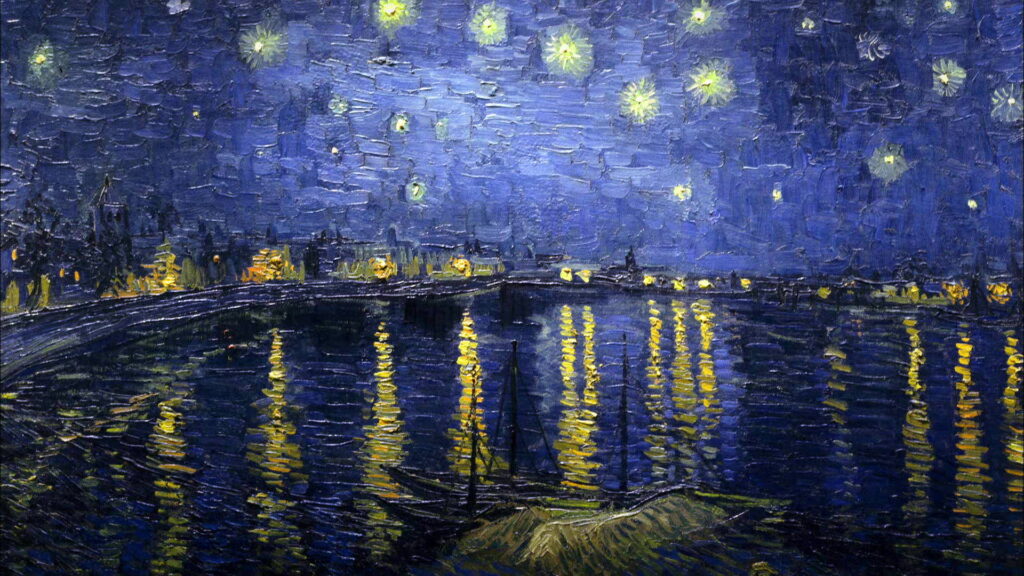Vincent van Gogh, a name synonymous with artistic brilliance and emotional depth, left an indelible mark on the world of art. His tumultuous life, marked by profound struggles and remarkable creativity, continues to captivate audiences worldwide. Let’s delve into the life and legacy of this iconic artist.

Introduction
Vincent van Gogh’s artistic journey is a testament to the power of passion and perseverance. Born in 1853 in the Netherlands, van Gogh’s early years were marked by a profound connection to nature and a deep appreciation for the beauty of the world around him. Despite facing numerous challenges throughout his life, van Gogh’s unwavering commitment to his craft led to the creation of some of the most celebrated works of art in history.
Early Life and Background
Van Gogh’s early years were filled with both joy and hardship. Raised in a religious family, he often found solace in the natural world, spending hours exploring the countryside near his home. Despite his deep love for art from a young age, van Gogh initially pursued a career in ministry, following in the footsteps of his father and grandfather.
Artistic Journey
It was not until his late twenties that van Gogh fully committed himself to the pursuit of art. Inspired by the works of the Impressionists and Post-Impressionists, he began experimenting with bold colors and expressive brushwork, developing a style that was uniquely his own. From his iconic sunflower paintings to his haunting self-portraits, van Gogh’s work reflected his innermost thoughts and emotions.
Struggles and Mental Health
Despite his undeniable talent, van Gogh’s life was marked by profound struggles, both personal and professional. Battling with mental illness throughout his adult life, he endured periods of intense despair and isolation. Yet, it was during these darkest moments that van Gogh produced some of his most groundbreaking work, using art as a means of expression and catharsis.
Legacy and Influence
Although van Gogh’s life was tragically cut short at the age of 37, his impact on the world of art is immeasurable. In the years following his death, his work gained widespread recognition, inspiring generations of artists and art enthusiasts alike. Today, van Gogh’s paintings are revered as masterpieces of emotion and expression, continuing to resonate with audiences around the globe.
Conclusion
In conclusion, Vincent van Gogh’s life and work serve as a powerful reminder of the transformative power of art. Through his unyielding dedication to his craft and his unwavering commitment to self-expression, van Gogh left behind a legacy that continues to inspire and captivate us to this day. His ability to convey raw emotion and profound beauty through his paintings ensures that his influence will endure for generations to come.
FAQs (After Conclusion)
- What are some of Vincent van Gogh’s most famous paintings? Some of van Gogh’s most famous paintings include “Starry Night,” “Sunflowers,” “The Bedroom,” and “Irises.”
- How did van Gogh’s mental health impact his artwork? Van Gogh’s struggles with mental illness profoundly influenced his artwork, often serving as a source of inspiration for his most emotive and introspective pieces.
- What is the significance of van Gogh’s use of color in his paintings? Van Gogh’s use of vibrant colors and bold brushstrokes was revolutionary for his time, allowing him to convey emotion and atmosphere in a way that was unprecedented in the art world.
- How did van Gogh’s relationships with other artists influence his work? Van Gogh’s relationships with fellow artists, such as Paul Gauguin and Émile Bernard, played a significant role in his artistic development, inspiring new techniques and approaches to painting.
- What is the importance of van Gogh’s legacy in the art world today? Van Gogh’s legacy looms large in the art world, serving as a source of inspiration for countless artists and a testament to the enduring power of creativity and self-expression.
